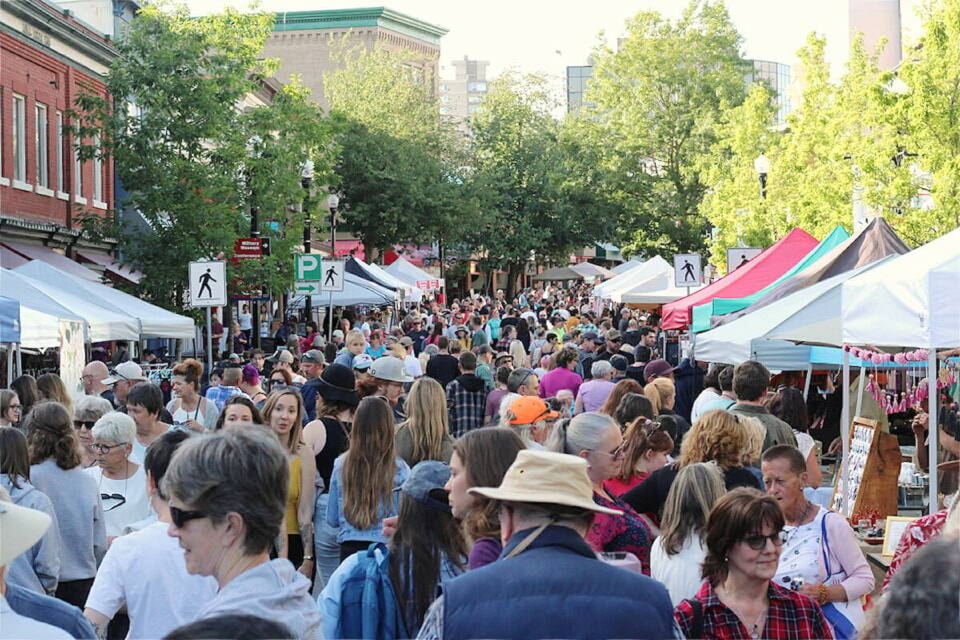BY ANTON KUZEMCHUK
Car-free streets ask us to change. To change the way we think, the way we live, the way we commute, but more importantly, they ask us to change how we imagine streets. At the heart of a car-free street is a movement. A shift in the paradigm from car-centric streets to streets that are focused on the pedestrian experience. People matter too, and our experience in public realms matter. We are drivers of business, catalysts for change, and crucial to creating the lively energy that attracts people to public spaces. Without people, these spaces are lifeless, empty, and devoid of any energy. Much like Commercial Street in Nanaimo.
Downtown Nanaimo is the heart of the city, yet the pulse that should be strong and vibrant is fading. The downtown is facing an identity crisis and there is a growing perception that it’s becoming unsafe and unruly. This is the result of increasing social issues like homelessness, vandalism, and an overall social disorder, as well as a growing frustration with these conditions from downtown businesses workers. Furthermore, it has a highway that runs right through the middle of it, contains a lifeless plaza, streets that make no sense in their layout, and people are scarce. Something needs to be done. Something drastic, something exciting, and perhaps even something counterintuitive. Let’s close Commercial Street to cars.
Whether it’s through temporary closures like the Commercial Street Night Market or through permanent closures altogether, car-free streets can generate business, reduce traffic and air pollution, improve public safety, but more importantly, they create an event that will bring people downtown. After all, the key to a lively and vibrant downtown is people.
There will always be opposition to change. To some, the very notion of the word car-free elicits the usual response of, ‘Less cars means less people, and less people mean less business.’ However, research has shown time and time again that this is just not the case. Car-free streets not only make the streets safer for people, but they create an event that will bring people to the downtown, and that is good for business. Some people might ask, ‘What about the businesses, how will they receive deliveries?’ A car-free street doesn’t need to be closed for 24 hours a day. There is ample time before and after street closures that allow for deliveries to take place. Others might ask, ‘what about parking?’ Well, downtown Nanaimo has approximately 16 parkades and parking lots that are within a 15-minute walk from downtown. City-owned parkades start at 75 cents for the first two hours.
Cities all over the world are joining the movement. In San Francisco, one of the busiest streets in the city’s downtown is closing to cars. New York City’s open streets initiative has banned cars across 17 miles of roadway and in 33 neighbourhoods in the city. If these cities can close their busy downtown streets to cars, then so can Nanaimo.
The time is now for a car-free Commercial Street. There is already a thriving car-free Thursday night market in the summer, so let’s build on this and start a ‘Sunday Street’ as well. Let’s create a safer and more lively downtown. Let’s help the downtown businesses thrive. Let’s join the car-free movement that cities all around the world are already joining. Let’s take back Commercial Street.
Anton Kuzemchuk is a master of community planning student at Vancouver Island University.
